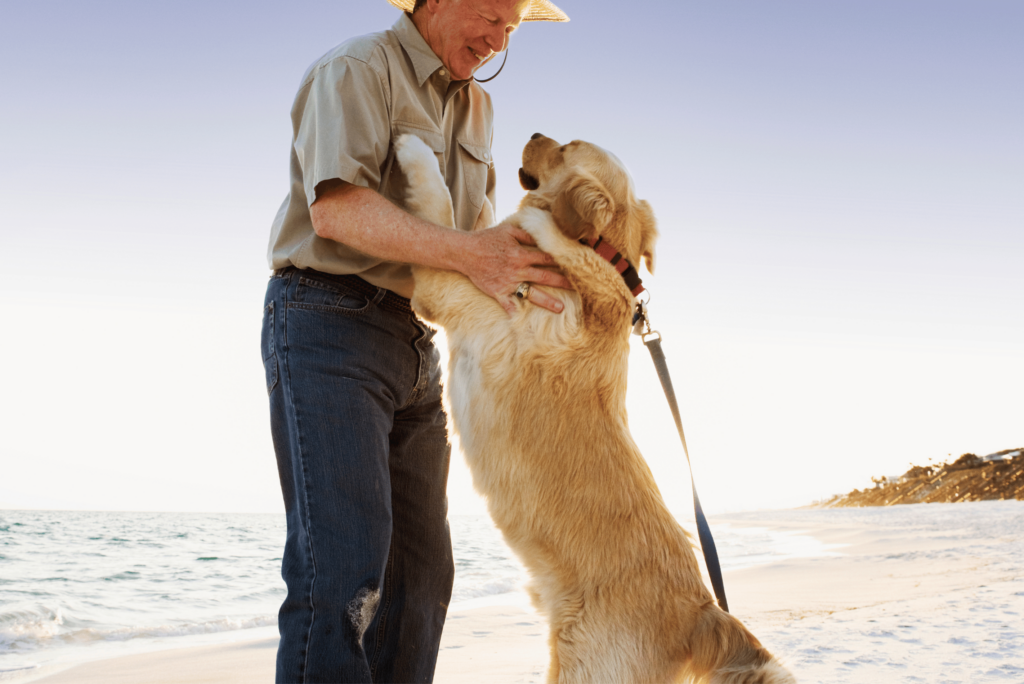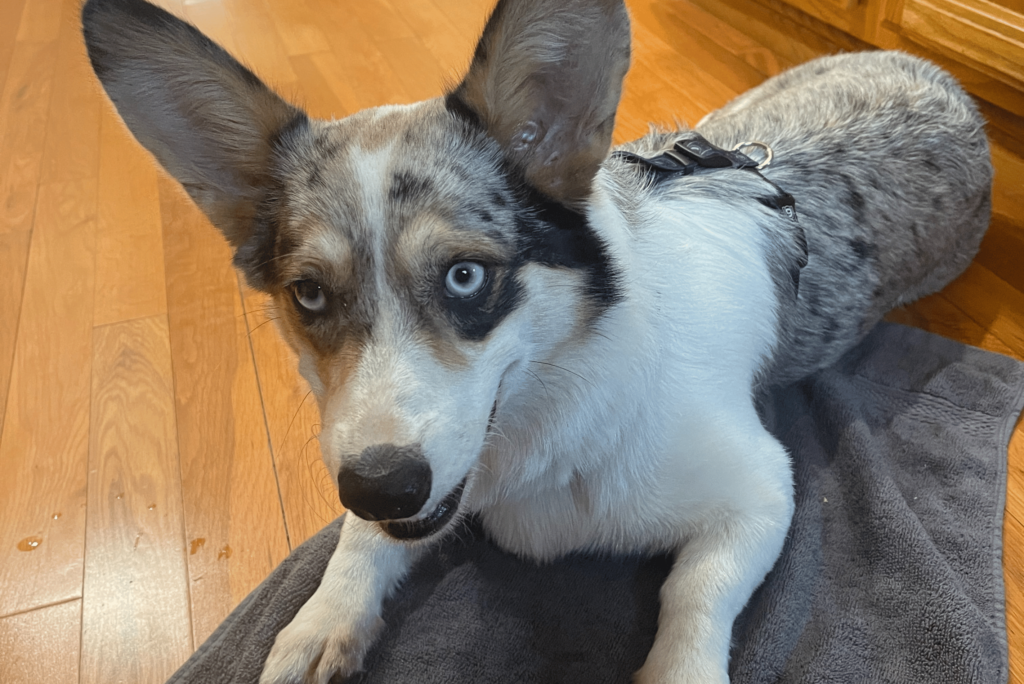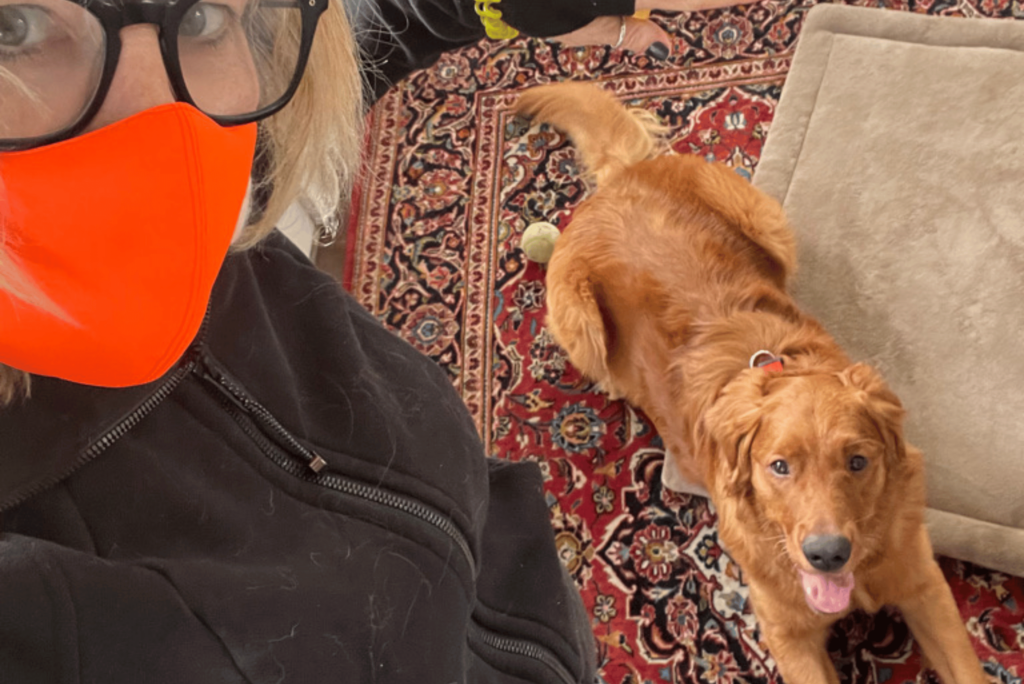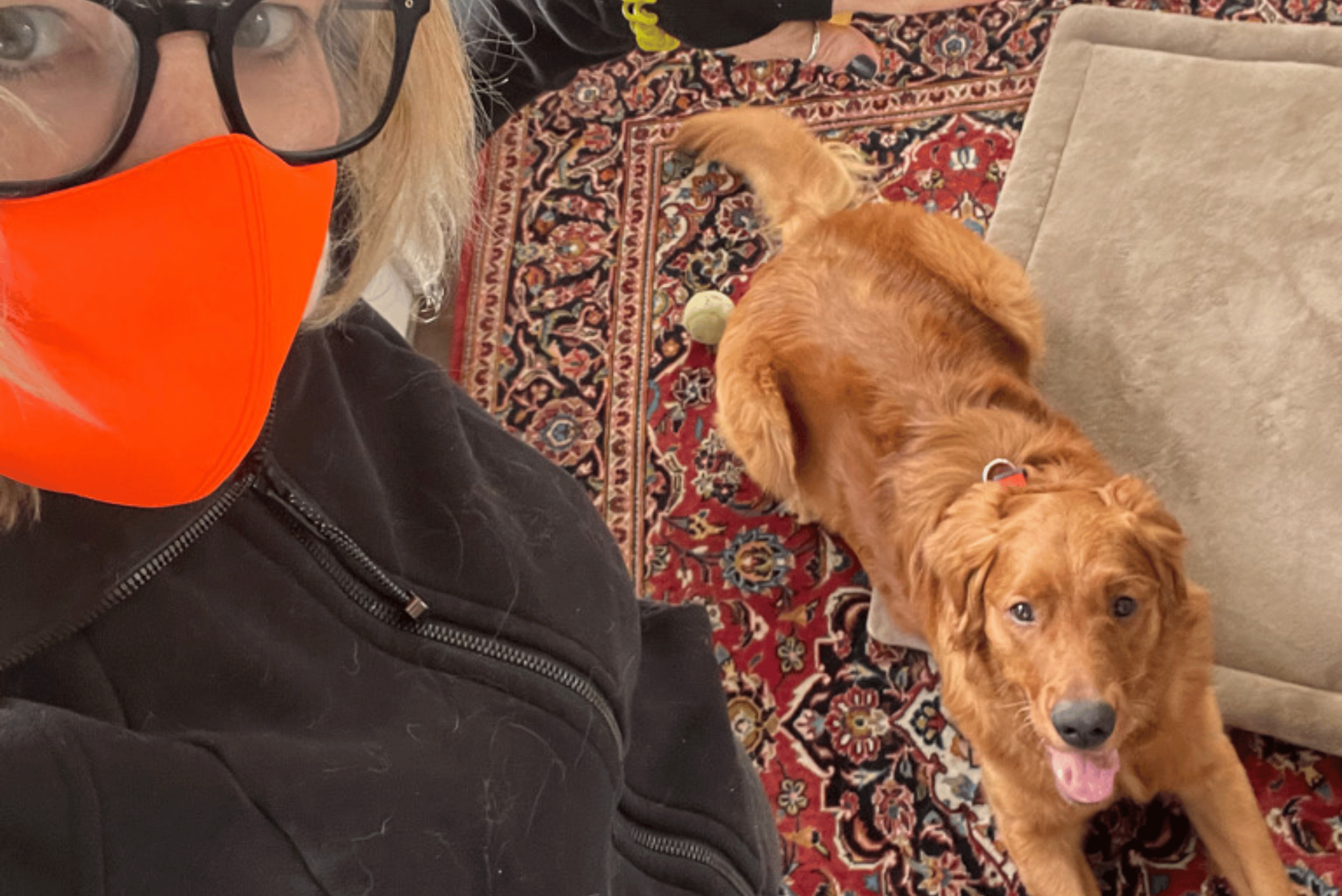Relaxation Training For Hyper Dogs & Puppies
*Important note: Throughout this blog post, we use the terminology ‘hyper’ or ‘hyperactive’ to describe dog behavior as these are the terms our clients use.
However, at Underdogs, we view ‘hyper’ as a label. A ‘hyperactive’ dog is actually stressed or anxious or responding to their environment or something else. It’s important to get to the bottom of this ‘hyperactivity’ in order to best work with your dog.
Being a teenager isn’t easy. Caught between wanting to be an adult… but still reacting like a child in some situations, feeling awkward and out of place, and listening to angsty music alone in your room because “Only Gerard Way understands me, Mom!” Going from child to adult is confusing, and it can be a tough transition for everyone in the household.
Dogs go through this transition period too. From around 8 months to 2 years old, they still are still learning and exploring new things (e.g., stealing food, running out the front door, chasing cats). It might have been cute when they’d nibbled at you during playtime when they weighed only 9 pounds. But especially in larger dogs, this can turn into a really painful habit. We get it; uncontrolled energy and nipping can seem like scary behavior.

But the truth is: they may be displaying scary behavior, but they are NOT scary dogs.
If this sounds like your dog, don’t worry. This is where relaxation training comes in. Whether your dog had formal puppy training or this will be their first official dive into training, relaxation training will work for you. Keep reading for advice on how to make your dog’s “teenage stage” a smoother transition for both you and your dog.
What Is Relaxation Training?
Relaxation training is exactly what it sounds like. It is meant to teach your dog impulse control, break hyper fixation and hyperactivity, and calm them down. A hyper dog can be as hard to direct as an out-of-control freight train. That’s why part of relaxation training focuses on managing behavior and enriching your dog. These steps help get your dog ready to focus on relaxation.
Relaxation Training Step 1: Managing Behavior
The first thing you learn in any kind of training is how to manage your dog’s behavior. When first working with Underdogs Long Beach, we will spend a good 20 minutes establishing some good management techniques that you can use.
The truth is… our dogs don’t know what you expect and at this stage of life, they don’t have impulse control… especially if they’ve never had any kind of training. Managing behavior usually involves using something like a crate, a leash, or baby gates.
For example, if you have guests and your dog has a frustrating habit of jumping all over them in excitement, crate your dog. Once your guests are inside, introduce your dog while leashed. This isn’t just preventing your dog from jumping; it’s managing their behavior in a way that helps set your expectations.
We also find that time-outs are useful for behavior management. Not because your dog is bad… they can’t always control their excitement and it can lead to undesirable behavior.
Getting a little too wild and jumpy? A 5 – 20 minute timeout gives your dog time to settle and relax. Once your dog seems settled and calm, let them back out. If they’re still worked up, they need a little more time. Don’t go over 20 minutes. This isn’t meant to be a punishment; it’s meant to give them time to self-regulate.

Relaxation training incorporates these tactics with protocols you can use as they learn impulse control. Training your dog to “relax on a mat” by laying on their mat when it’s time to calm down is a training tool we find incredibly helpful. As you use it, your dog may start using their mat when they feel overwhelmed… without your direction.
Step 2: Enrichment Activities
Just like human teens need activities to help them learn and grow as people, and keep them out of trouble, dogs need activities too. In fact, we find that mentally stimulating activities are far more important for our pups than physicals activity! All in all, when your dog is well exercised in body and mind, they’re much happier and much calmer.
A long sniff walk, training, a game of catch in the backyard, or a game of tug of war are, of course, great ways to engage your dog.
Another great way to enrich your dog is by doing activities that speak to their breed. These activities will satiate the natural drive your dog has for certain behaviors and direct them into appropriate ways to meet those needs.
Do you have a dog that was bred for herding, like a Border Collie, Aussie, or Sheltie? Trick training, agility training, digging pits, and herding balls work the sharp minds of herding dogs and help them burn off energy. They were bred to be high-activity dogs and love having things to do.
Is your Siberian Husky or Malamute a fence-jumping neighborhood explorer? These dogs were bred to be independent and as a result, can be very inventive in ways to meet their own needs. These traits that are great for sled dogs with sharper hearing and smell than humans? Not so great in a suburban backyard. Sniff walks, long hikes, exploration, hide and seek, long-distance walks, and, of course, lots of training are what these dogs need to keep them from hopping the fence and looking for adventure.
A bored terrier can seem like a tiny (or medium) terror. They can be hyper (we like to call this energetic), determined, and have a reputation for being yappy. You have to be able to move fast and be relentless when it’s your job to hunt rodents! Digging pits, soft puzzle toys, snuffle mats, and agility courses mimic the job terriers were bred for and help them find their inner peace.
Even mixed-breed dogs have dominant breed traits… no matter what your dog’s breed. Experiment with different activities and games until you find something that clicks with your dog. See which activities help your dog calm down relax and act like a mature or well rounded adult dog.
Relaxation Training Step 3: Teach Them Alternate Behaviors
You’ve managed, enriched, and your dogs needs are met. Now what? Now it’s time to teach alternate behaviors. These behaviors are your end goal. Instead of jumping up and turning circles, you want your dog to be able to be directed to their calm place. This could be a special mat or even their crate (with the door open). From there, they can relax and focus on behaviors that are more manageable than 50lbs of overstimulated dog trying to jump on you.
At Underdogs Long Beach, we train a variety of alternative behaviors, but some of our favorites are “relax on a mat” and “go say hi”. We’ve created a step by step process to follow for each of these “tricks” and work through them with our clients.

As you work with your dog, remember that sometimes you need to find your calm place. It’s easy to get frustrated, but your dog is trying to do their best to navigate in a human-dominated world. Your dog isn’t trying to be “bad”. They’re just going about their day the way they were bred to. It’s up to us to help them navigate human expectations and learn to communicate with our dogs in a healthy and productive way.
Need help with relaxation training? Underdogs Long Beach specializes in relaxation training for hyper, excitable, or reactive dogs that jump, bite, mouth, nip, or generally just cause a little bit of chaos. We offer both virtual and in-person training in the Long Beach area. Contact us now to get started!
Leave a Reply Cancel reply
Underdogs Long Beach uses force-free dog training methods to build relationships between dogs and owners.
© Underdogs long beach | Legal
